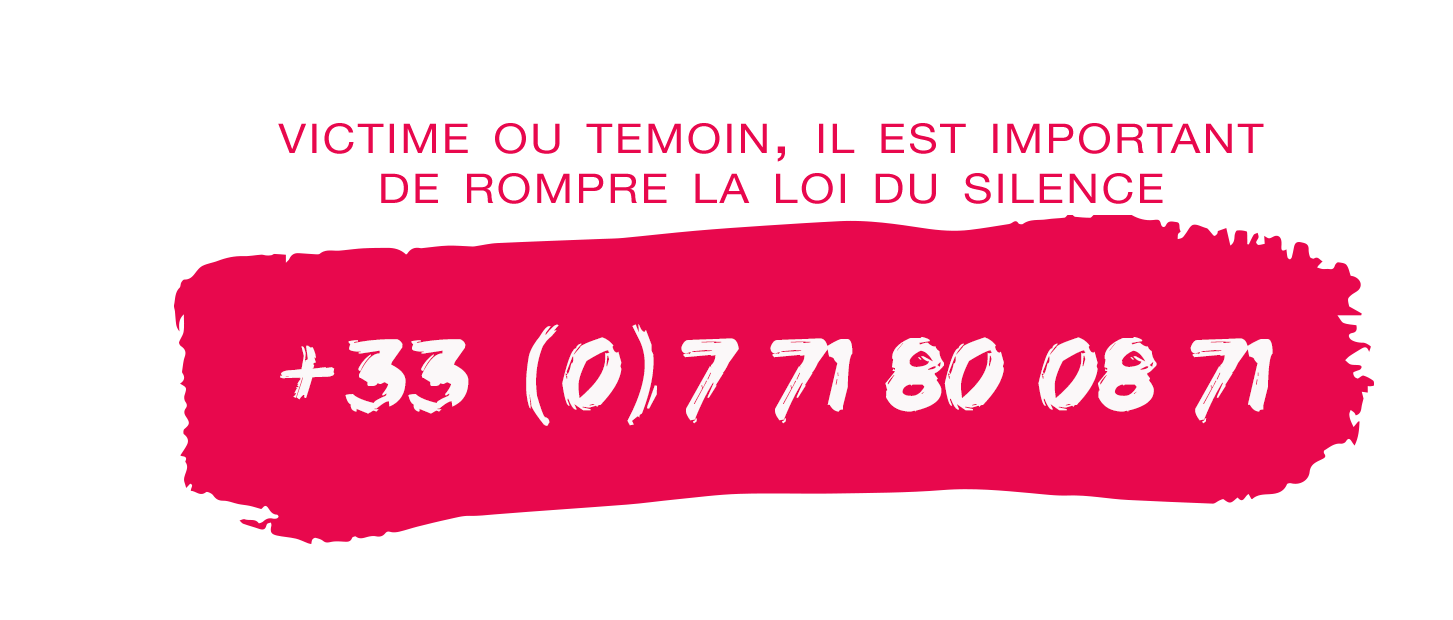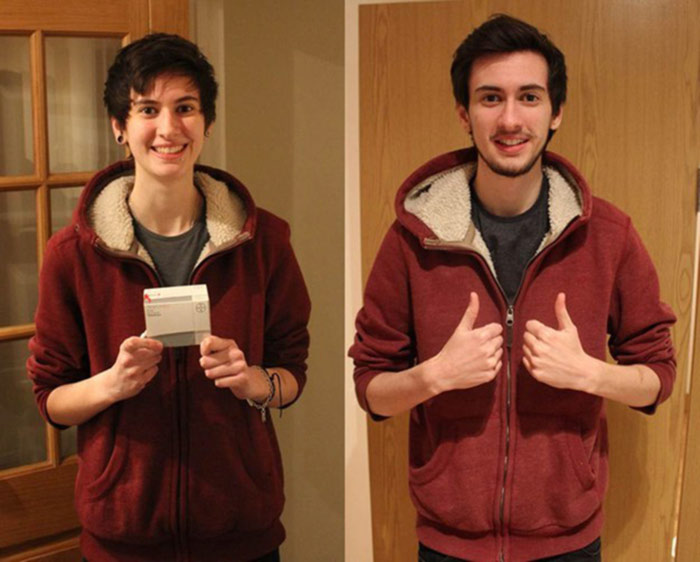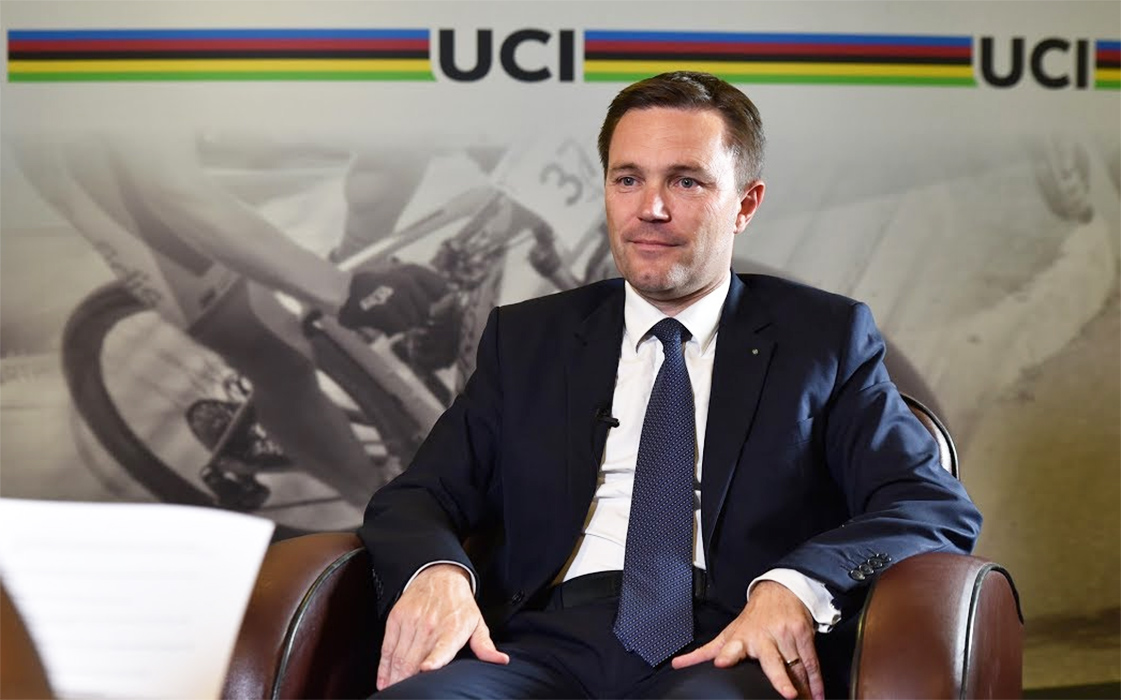>> This Trans Guy Took A Selfie Every Day For Three Years To Show How His Face Changed
[spacer]
Jamie Raines, aujourd’hui âgé de 21 ans, s’apprêtait à fêter ses 18 ans lorsqu’il a commencé à prendre de la testostérone, l’hormone qui aide les hommes transgenres à masculiniser leur apparence, leur voix et leur corps.
«Je n’aimais pas me regarder dans le miroir avant de commencer le traitement. Maintenant, je suis heureux de ce que je vois», a confié le jeune homme au site BuzzFeed
Jamie, qui est depuis également devenu une vedette sur YouTube, a souhaité documenter sa transition en prenant un selfie chaque jour pendant trois ans.
«Au départ, je pensais uniquement le faire sur la première année, mais je n’avais pas encore de poil, alors j’ai continué.» Et puis, son visage s’est un peu plus allongé, son nez également, et la barbe est apparue : «Je n’étais pas peu fier», explique t-il.
[spacer]
[spacer]
«La testostérone n’agit pas chez tout le monde de la même façon. Certains sont recouverts de poils en moins de 6 mois mais pour ma part, ça aura été un peu plus long. En même temps, je ne m’étais pas spécialement projeté. J’attendais de voir les résultats en fonction. Et au bout de trois mois déjà, j’ai constaté que ma voix a commencé à changer. Je me suis coupé les cheveux plus court, histoire de… mais le meilleur conseil que je pourrais donner c’est de prendre patience. Le temps est votre meilleur allié. J’ai aussi eu la chance d’avoir un excellent chirurgien pour la mammectomie et j’ai été super bien entouré par mes amis. J’ai bénéficié du soutien inconditionnel de ma mère, pour qui je suis bien évidemment toujours la même personne.»
Des changements d’humeur ? «Pas spécialement. Je suis sans doute moins émotif, je pleure moins rapidement. Dernièrement, je me suis présenté à un entretien d’embauche et personne n’a soupçonné que j’avais fait une transition. Je ne l’ai pas non plus caché et ça s’est bien passé. Je suis amoureux…»
Raines a transformé ses 1400 photos en un court métrage qui a attiré l’attention d’un producteur de télé et l’a inclus dans un projet de documentaire à propos des personnes transgenres. «Vivement la suite !»
[spacer]
>> “I didn’t like looking in the mirror before I started on testosterone. Now I’m happy with what I see.” Jamie Raines talked to BuzzFeed News about capturing his transition and transforming his life.
Student and YouTube star Jamie Raines, 21, was about to turn 18 when he first started taking testosterone, the hormone that helps transgender men masculinise their appearance, voice, and body. Here he is on that first day, holding the medication.
He decided to document his transition by taking a selfie every day. “I initially intended to just do it for the first year,” he told BuzzFeed News. “But then I didn’t get any facial hair in my first year.”
But in the second year, he started noticing more and more changes. “My face started to get longer and I lost the chubby cheeks,” he said.
Raines noticed that his nose changed too.
And then, after two years on testosterone, facial hair began to appear. “I was waiting for it once I first started getting a couple of chin hairs,” he said. “It was really exciting.”
The facial hair kept growing… until, after more than three years of testosterone, Raines had a full, proud beard. This is his most recent picture (complete with socks drying in the background).
And this shows the testosterone journey in two pictures in which he’s wearing the exact same outfit.
Raines turned the 1,400 photos into a short film that caught the attention of a TV producer who included Raines in a new documentary for Channel 4 about transgender men.
Why did you start taking selfies?
Jamie Raines: It was to see how testosterone can change the face, so if people come away seeing that it can make those changes then that’s good. But also I just wanted something for me to document my transition. I thought I’d take a photo every day so when I strung it all together you could see the changes. Within the first six months you didn’t see that much but as time went on it became more and more rewarding. So now I feel like I’ve been doing it for so long I just want to keep going, for maybe five years. I’m really happy I’ve done it.
When you started testosterone, could you imagine how your face would end up looking?
JR: When I first started I tried not to have an image in my mind – I was taking testosterone so I could go through the correct puberty for me – and I tried not to have expectations, because testosterone affects everyone differently and different changes come in at different points. Some people get loads of facial hair within the first six months, and some people never get it. I didn’t pin too many hopes on T [testosterone] changing me drastically and just took the changes as they came.
How did you feel when you looked in the mirror aged 17, and how does that compare to now?
JR: I didn’t really see myself. I got my hair cut really short and that made things a bit better but it was a very awkward time. I didn’t like looking in the mirror, but then as soon as I started testosterone it was about looking for those changes and then every time you noticed something it was exciting. And it’s the complete opposite now, I’m very happy with what I see in the mirror and very grateful for how I look now.
How important was it for you to get facial hair?
JR: Not massively, but I’m really happy I have it. But when I first started medically transitioning the two main things I wanted was getting top surgery [mastectomy and/or chest reconstruction] and a deeper voice. The other changes were really an added bonus.
How quickly did your voice change?
JR: It happened in stages. In the first six months, there was a very slight change at one month and two months, and then at three months I had my first proper voice drop, and then four months it started to sound more naturally deep, and since the six-month mark it’s been gradual. I don’t think it’s still changing now but I make yearly voice comparisons to keep up to date with how it’s changed.
Did testosterone change your mood at all?
JR: I think I’m less emotional but that’s it, really. I guess I cry less and my temper is slightly shorter but I don’t think it’s changed my personality or anything.
How have your loved ones reacted to your transition?
JR: My whole family and my girlfriend [Shaaba] have just been really supportive and really excited for me because of the changes. I told my mum first and then she told my dad and brother and they’ve all just been really great with it. My mum thinks this was always how I was supposed to be. She doesn’t feel like she’s lost a daughter, because I’m the same person to her – I’m still her child, but now I’m just her son.
It sounds like it was pretty clear to your mum early on?
JR: Yeah, when I told her she said it explained a lot, because of how I’d been throughout my life. I had just turned 17 when I told her, so [it was] just under a year before I started testosterone. I went to the GP and he told me it would be about two years by the time I was seen by the gender clinic, so I went to a private doctor to start testosterone and have top surgery. I got the surgery after I’d been on testosterone for six months.
What advice would you give to other trans guys who are about to start testosterone?
JR: That patience is your best friend with transitioning and it’s good to surround yourself with a community or friends and family that will support you – either online or in real life. Ask questions of people who’ve already gone through it. It feels like it takes ages for things to start happening but then when it does start everything changes really quickly. Now people are surprised when I tell them I’m trans. I had a job interview recently and when I told them they thought I was going to transition from male to female!

































